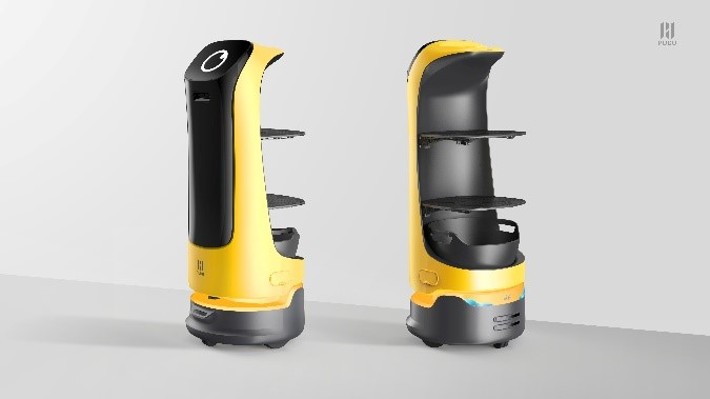[ad_1]
Triangle, trapezoid, half oval and more — debating workspace tables these days can sound like a geometry class.
As employees embrace hybrid work, companies need to re-evaluate meeting spaces when some attendees are in the office and others dial in. That begs the questions of how to optimize such spaces, which videoconferencing technology to use, and of course, defining what exactly a trapezoid is (read: a shape with four sides, two of which are parallel, while one or both of other two can be slanted).
When someone says “conference room,” most people envision a long rectangular table surrounded by chairs. But that setup isn’t geared for virtual meetings where participants might sit far from a screen, assuming the room is even video enabled. “There is a movement towards flipping these rooms from a portrait orientation to landscape,” says David Cooper, product category manager at office furniture maker Steelcase. That would allow workers to sit closer to the wall-mounted screen. New camera systems can also zoom in on certain people so they fill up the screen like their remote counterparts.
Some companies are already experimenting with different table shapes. Microsoft Corp. has tinkered with triangles and half-ovals at its Redmond, Washington, test center to achieve the best setup for in-office conferencing. In its revamped Manhattan office, Cisco Systems Inc. settled on tables where the widest edge is closest the screen, and it gets narrower further away, so everyone can be seen on camera without swerving around their neighbor. Steelcase pointed to its popular Elbrook collection tables that are shaped like gumdrops for a more collaborative huddle.
So, what’s the best option? Take the meeting size into account. While a trapezoid- or triangle-shaped table may work best to accommodate large meetings, a semi-circle or pebble shape may be work best for three or so people, according to Peter Miscovich, a managing director who consults on executive management at Jones Lang LaSalle. You can debate edges with right angles versus gentle curves, but at the end of the day, it has to be functional for everyone involved.
“We’re trying to replicate natural experiences that happen in real space, but taking the slight line of the camera into consideration,” says Cherie Johnson, global design director at Steelcase. According to a report from Microsoft, 43% of remote workers and 44% of hybrid workers say they don’t feel included in meetings. But only 27% of companies have created new hybrid meeting etiquette.
Conference room design is only one element of hybrid meetings. Technology in those spaces may be more important, as people who have struggled to join a video call can attest. “Audio is number one and then video is number two,” Miscovich says. He also emphasizes the importance of interactive collaboration tools such as smart boards for brainstorming sessions. “You’re designing mini movie theaters,” he says with a laugh. “It all has to be seamless.”
In a time of both misinformation and too much information, quality journalism is more crucial than ever.
By subscribing, you can help us get the story right.
SUBSCRIBE NOW
[ad_2]
Source link





















